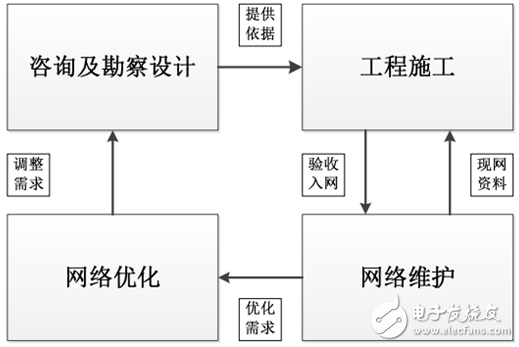NB-IoT needs deep coverage to carry the functions of public services. Can the long-term operator-led network optimization model turn the NB-IoT network into a boutique network? Perhaps it is time to try the "full participation" network optimization model.

Communicating with many Internet of Things solution vendors, when talking about the implementation of NB-IoT projects, everyone has a common opinion: NB-IoT network coverage and performance are insufficient, resulting in many applications that cannot be implemented. As a public network deployed by a nationwide operator, connection is its core business, so users require ubiquitous network coverage, at least where the main application is deployed, there must be a stable network signal. At present, the industry's demand for good network coverage and performance is becoming more and more obvious. Operators also need to fully implement large-scale in-depth coverage and network optimization work. In this process, the "full participation" approach may be an option. The direction to try.
"Network first" is reasonable, but in-depth coverage and network optimization are indispensable
When low-power wide-area networks (LPWAN) entered people’s vision, there was a debate about "network first" or "on-demand deployment". One point of view is that a large number of innovators will naturally launch various applications after the network is built. The point of view is that when there are specific landing applications that require the corresponding network industry, the network will be built on demand. The author once planted a pit in "Low Power Wide Area Network!" "Look at the stories of Sigfox and LoRa vendors" article cited the case where multiple Sigfox and LoRa vendors have deployed metropolitan area networks on a large scale in the past two years, and the number and speed of terminal access has not reached the expected case. From these cases, it seems that "network first" is not a good choice, but it is a relatively reasonable choice for licensed spectrum NB-IoT networks.
For those manufacturers who are the first to deploy the metro LoRa network, although they have only built dozens of LoRa base stations, they need to pay for tower rent, power, manpower maintenance and other costs every month, and there is not much application access for a long time. Operating income and costs are extremely mismatched. But for operators, similar costs are the sunk costs already paid by telecom operators. A large amount of costs can be reused with traditional 2G/3G/4G networks, such as tower rental, power, and maintenance costs. The operators themselves The traditional cellular network has been paid, and the marginal cost of the NB-IoT network is very low, but for non-operator enterprises, the marginal cost of deploying and operating a LoRa metropolitan area network is very large.
In addition, NB-IoT will face the Internet of Things application access in all industries and has a very obvious public network attribute. This attribute itself requires a continuous and complete service. Public services are generally provided with a complete infrastructure first. service. At present, in addition to a few large-scale fields such as public utilities, fire protection, and home appliances, a large number of applications are fragmented and long-tailed. Various industries and various locations may have access to NB-IoT networks. In addition to the NB-IoT network deployment already carried out, operators also need to carry out comprehensive in-depth coverage and network optimization.

Although NB-IoT has a strong gain compared with LTE and GPRS, it cannot guarantee that there will be signals in any corner of the Internet of Things equipment that needs to be deployed. Currently, China Telecom has completed 400,000, and China Unicom has completed 300,000 NB-IoT base stations. , But there is still no effective network signal in a large number of scenes, so further in-depth coverage, especially network optimization work is essential.
Internet of Things network optimization needs more complex work
In the past ten years or so, for the 2G/3G/4G network of human-to-human communication, telecom operators spend tens of billions on network optimization every year, which has also spawned a large number of third-party professional network optimization companies, including many Listed company. For the optimization of NB-IoT networks, telecom operators are also in progress, but due to cost-benefit economic issues, network optimization has not yet been carried out on a large scale and in a comprehensive manner.
On the operator’s procurement bidding platform, it can be inquired that the operator’s multiple provincial companies have carried out bids for NB-IoT network optimization. These bids are mostly for public utilities, fire fighting, and electric vehicles that have been determined to have scale effects. In anti-theft and other projects, targeted network optimization is carried out to ensure the implementation of these large-scale projects.
For the scene of human-to-human communication, network optimization practitioners have accumulated a lot of experience, and the places that need to be optimized are places where people are active, and the signal testing is relatively convenient, and the testing tools are more abundant. However, many scenarios of the Internet of Things are places where people will not go or are not easy to go. Network signal testing and optimization may not be so easy, and a small number of devices are deployed in various corners, and the network environment is harsh. The labor cost of network optimization is too high.
Similar to traditional cellular networks, NB-IoT network optimization is mainly led by operators, with equipment and service manufacturers participating. It also encounters difficulties in property coordination, high labor costs, and insufficient vitality. In the more complex and diversified IoT scenarios, it may be possible to discuss involving more subjects in network optimization.
Discussion: NB-IoT network optimization with multi-agent participation
In fact, most LoRa networks in China are a "deployment on demand" model, and network construction is carried out only when users have IoT applications. Because it is a small-scale network deployment, network optimization is more convenient and simple. This type of network optimization work is carried out by IoT solution providers and integrators at the user’s premises. The property coordination is difficult and highly flexible. Of course, there are many participants.
In the NB-IoT network optimization work, you can also refer to a similar approach to develop a large number of IoT solution providers, integrators, and application vendors into network optimization participants, forming a network optimization model with full participation. Because the application scenarios of the Internet of Things are very diverse, the operator-led model with the participation of equipment and service providers does not guarantee seamless coverage of all scenarios. However, if the power of multiple parties is used, the solution provider and integrator of each application Or direct users can quickly understand the network quality of their scene, and cooperate with operators to optimize the network, which greatly reduces the difficulty of network optimization.
In the actual operation of many projects, some scenarios have insufficient NB-IoT network coverage, and the scale of these scenarios is not large, and operators will not specifically optimize the network for this purpose. In this case, solution providers and integrators often choose LoRa to fill blinds to ensure the uplink and downlink of all sensor data. Due to the flexibility and low cost of LoRa deployment, NB-IoT and LoRa form a very obvious complementarity in small and medium-scale IoT projects. To a certain extent, LoRa has become the only option for NB-IoT network optimization and blindness.
LoRa can fill blinds and supplements, largely due to its high flexibility and convenience. At present, in addition to specialized large-capacity base stations in the LoRa series, there are also compact indoor gateways and third-party network management platforms. Just like home routers, a small-scale network can be deployed at a low threshold. Of course, referring to the flexibility of LoRa, we can also imagine a new model: if the industry chain can promote the popularization of low-cost, low-complexity and convenient access NB-IoT gateways, then the solution provider, integrator or user is located Scenario When NB-IoT network coverage is insufficient, self-deploy NB-IoT gateway to fill blinds. Through such “crowdsourcing†operation, deep coverage of NB-IoT may be quickly achieved. However, this type of model requires many prerequisites. First, a low-threshold network testing tool is required, so that various decentralized integrators and solution providers can carry out their own NB-IoT network performance testing on the landing site; secondly, the industry needs to integrate NB-IoT Gateway devices are simpler and cheaper to make. Operators need to provide a simple third-party core network and network management platform, so that various decentralized application vendors can quickly implement small-scale NB-IoT network deployment, and at the same time, this small-scale The NB-IoT network is incorporated into the unified network management of operators. Of course, such an operation will form a model similar to the "operator for everyone". The subject who performs network blind correction has certain ownership of this small-scale network, and the operator cannot charge connection fees for the income from the blind correction. , But it is of greater significance for operators to connect and improve the network.
As an operator-level public network, NB-IoT needs deep coverage to carry the functions of public services. Can the long-term operator-led network optimization model turn the NB-IoT network into a boutique network? Perhaps it is time to try the "full participation" network optimization model.
The Transformer insulating sleeve is the main insulation device outside the transformer box. The outgoing line of the transformer winding must pass through the insulation bushing to insulate the outgoing line and the outgoing line from the transformer shell, and also play the role of fixing the outgoing line. Due to the different voltage levels, the insulating bushing has the forms of pure porcelain bushing, oil-filled bushing and capacitor bushing. Pure porcelain bushing is mostly used for distribution transformers of 10kV and below. It is a conductive copper rod in the porcelain bushing, and the porcelain bushing is air insulated; Oil-filled bushing is mostly used for 35kV transformers. It is filled with oil in the porcelain bushing. A conductive copper rod is threaded inside the porcelain bushing, and the copper rod is wrapped with insulating paper; Capacitive bushing is used on high voltage transformers above 100kV, which is composed of main insulated capacitor core, upper and lower porcelain parts of external insulation, connecting sleeve, conservator, spring assembly, base, equalizing ball, measuring terminal, wiring terminal, rubber washer, insulating oil, etc
Transformer bushing,MV insulated terminal,Insulating porcelain bushing,Transformer insulation terminal,Pure porcelain bushing
Henan New Electric Power Co.,Ltd. , https://www.newelectricpower.com
